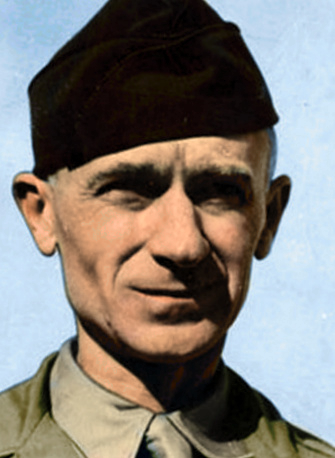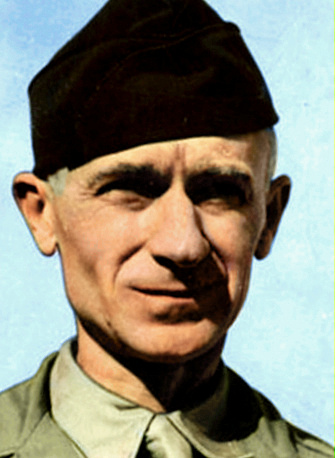The Pittsburgh Press (February 26, 1945)

Roving Reporter
By Ernie Pyle
IN THE MARIANAS ISLANDS (delayed) – Before starting out on my long tours with the Navy, I’ve decided to visit the famous B-29 Superfortress boys who are bombing Japan from here.
This came about largely because I have “kinfolk” flying on the B-29s, and I thought I’d kill two birds by visiting and writing at the same time.
So here I am, sitting on a screened porch in my underwear, comfortable as a cat, with the surf beating on the shore and a lot of bomber pilots swimming out front.
The B-29 boys, from commandant clear down to lowest enlisted men, live well out here. They are all appreciative of their good fortune, and I’ve not heard a dissenting voice. Of course, they would all rather be home, but who wouldn’t?
The man I came to visit is Lt. Jack Bales, another farm boy from down the road near Dana, Indiana. Jack is a sort of nephew of mine. He isn’t exactly a nephew, but it’s too complicated to explain. I used to hold him on my knee and all that sort of thing. Now he’s 26, and starting to get bald like his “uncle.”
Ready for career
Jack’s folks still live just a mile down the road from our farm. But Jack left the farm and went to the University of Illinois and got educated real good, and was just ready to become a famous lawyer when the war came along and he enlisted.
He spent a year as a private and then got a commission and now he’s a first lieutenant and flew over with the B-29s from Nebraska last October.
When I telephoned Jack and said I’d be out in about an hour to stay a few days, he said he would put up an extra cot in his hut for me.
When I got there the cot was up, with blankets and mattress covers laid out on it. Jack had told the other boys he was having a visitor, and on the assumption it was a woman, Jack had six eager volunteers helping him put up the cot. When I showed up, skinny and bald, it was an awful letdown, but they’ve all been decent about it,
Record for missions
Jack lives in a steel Quonset hut with 19 other fliers. Most of them are pilots, but Jack is a radio man. He and another fellow have charge of all his squadron’s radio. He doesn’t have to go on missions except now and then to check up.
But upon arriving I learned, both to my astonishment and pride, that he had been on more missions than anybody in his squadron. In fact, he’s been on so many that his squadron commander has forbidden him to go for a while.
He doesn’t go on so many because he enjoys it. Nobody but a freak likes to go on combat missions. He goes because he has things to learn, and because he can contribute things by going.
Another mission or two and he will have had his quota authorizing him to go back to rest camp for a while. But he seems to show no strain from the ordeal. He’s pretty phlegmatic, and he says that sitting around camp gets so monotonous he sort of welcomes a mission just for a change.
Little chance to peek
During flight Jack sits in a little compartment in the rear of the plane, and can’t see out. In all his missions over Japan he’s seen only one Jap fighter. Not that they didn’t have plenty around, but he’s so busy he seldom gets to a window for a peek. The one time he did, a Jap came slamming under the plane so close it almost took the skin off.
Like all combat crewmen, Jack spends all night and at least half of each day lying on his cot. He holds the record in his hut for “sack time,” which means just lying on your cot doing nothing. He has his work so organized that it doesn’t take much of his time between missions, and since there’s nothing else to do, you just lie around.
Eight out of 10 married
The B-29 fliers sleep on folding canvas cots, with rough white sheets. Sleeping is wonderful here, and along toward morning you usually pull a blanket over you.
Each flier has a dresser of wooden shelves he’s made for himself, and several homemade tables scattered around. The walls are plastered with maps, snapshots and pinup girls – but I noticed that real pinup girls (wives and mothers) dominated over the movie beauties. In fact, eight of the 10 men in the hut are married.
Although the food is good here, most of the boys get packages from home. One kid wrote and told his folks to slow up a little, that he was snowed under with packages.
Jack has had two jars of Indiana fried chicken from my Aunt Mary. She cans it and seals it in mason jars, and it’s wonderful. She sent me some in France, but I’d gone before it got there.
Jack took some of his fried chicken in his lunch over Tokyo one day. We Hoosiers sure do get around, even the chickens.
